The most important thing in football is what happens on the pitch.
Lionel Messi
You might think that football legend Messi is merely stating the obvious, but he makes a good point. Picture hordes of fans, crowding in the stands. They mess with their phones, eat and drink, walk around and socialise. Full focus returns to the pitch only when the action ramps up.
Taking your eyes off the pitch means missing vital game clues the referee gives. In fact, knowing football referee signals is vital to understanding what's happening on the pitch. This article explains football official hand signals, what they mean, and when they're used. Before we start, you might need this background information:
- Every game typically features one referee and at least, two assistants.
- The referee stays on the pitch during game play, the assistants monitor from the sidelines.
- Referees have whistles, but use them sparingly.
- This article details 10 common referee signals; the last seven are assistant referee signs.

Goal Kick
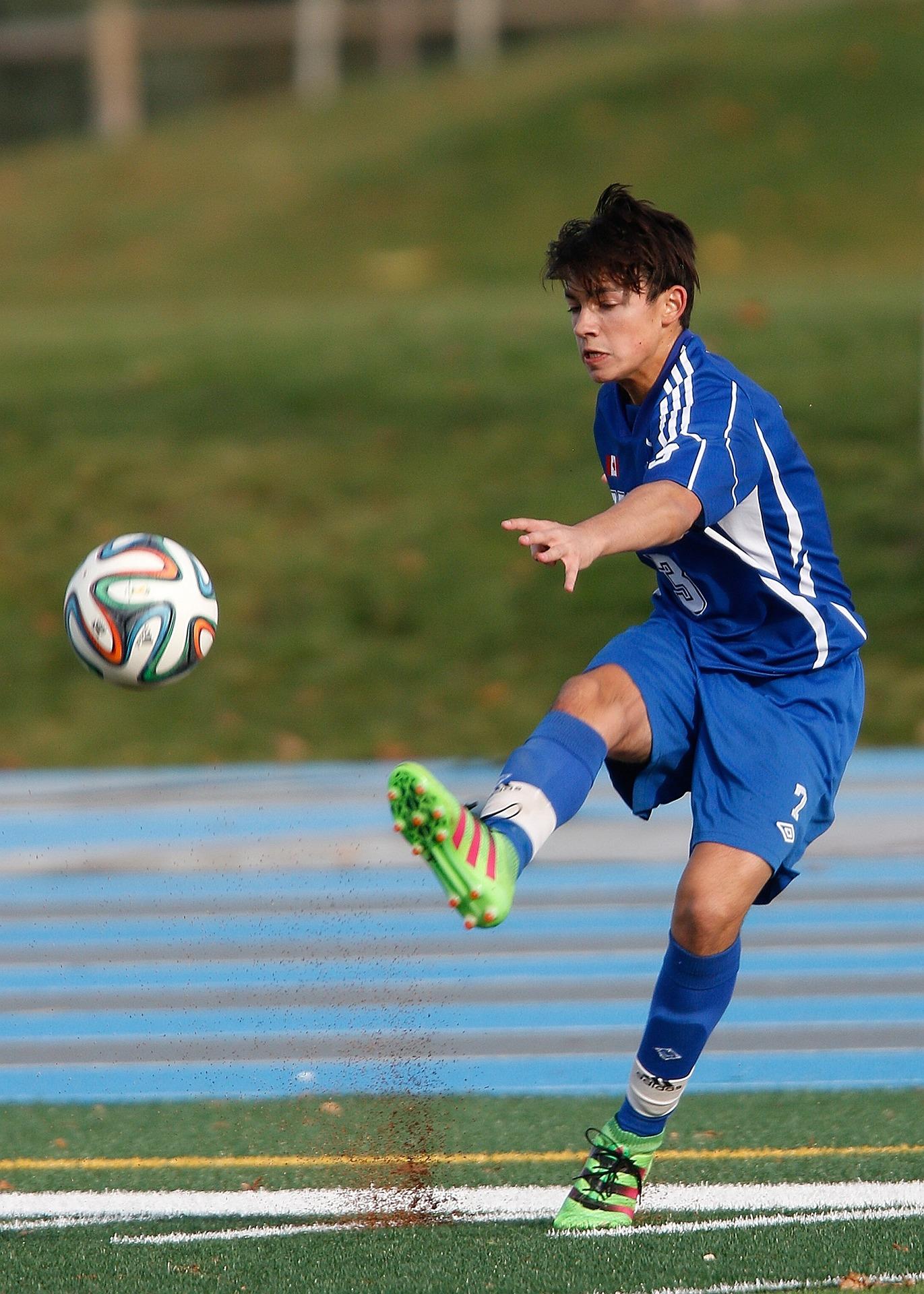
Let's say you're on the opponent's side of the pitch, and you're lining up to kick a goal in. Your shot goes out of bounds, instead of into the net. That is when the referee will signal a goal kick.
To make this sign, the referee will face the goal and hold their arm out horizontally, palm down, towards the goal. As soon as the right player takes possession of the ball, the referee drops their arm. This video shows you how to make this sign.
The goal kick sign is the easiest to master and remember. If you're training to become a football referee, this signal will be among the first ones you learn. Of course, referee trainees typically spend years as an assistant referee. So, you need to learn those referees' 'goal' signs, too; they feature at the end of this article.
Free Kicks
Free kicks come in two flavours. A referee may award a direct free kick to a 'fouled' team following a listed penal foul. Direct free kicks may result in goals. This clip demonstrates the sign for a direct free kick.
An indirect free kick may also result in a goal, but the ball must pass to another player. That is, the player making the free kick aims the ball at a teammate, who scores the goal. Referees have different signals for these free kicks.
Direct Free Kick:
referee points to the defending goal with one hand.
Indirect Free Kick:
referee raises one hand in the air and keeps it raised until a second player (from either team) touches the ball, or it goes out of play.
Penalty Kick
The referee will signal for a penalty kick when a player commits a free kick foul inside their own penalty area. They will do so when the foul would normally be punishable by a direct free kick.
To signal a penalty kick, the referee points to the penalty mark. The player must wait for the referee to signal before kicking.
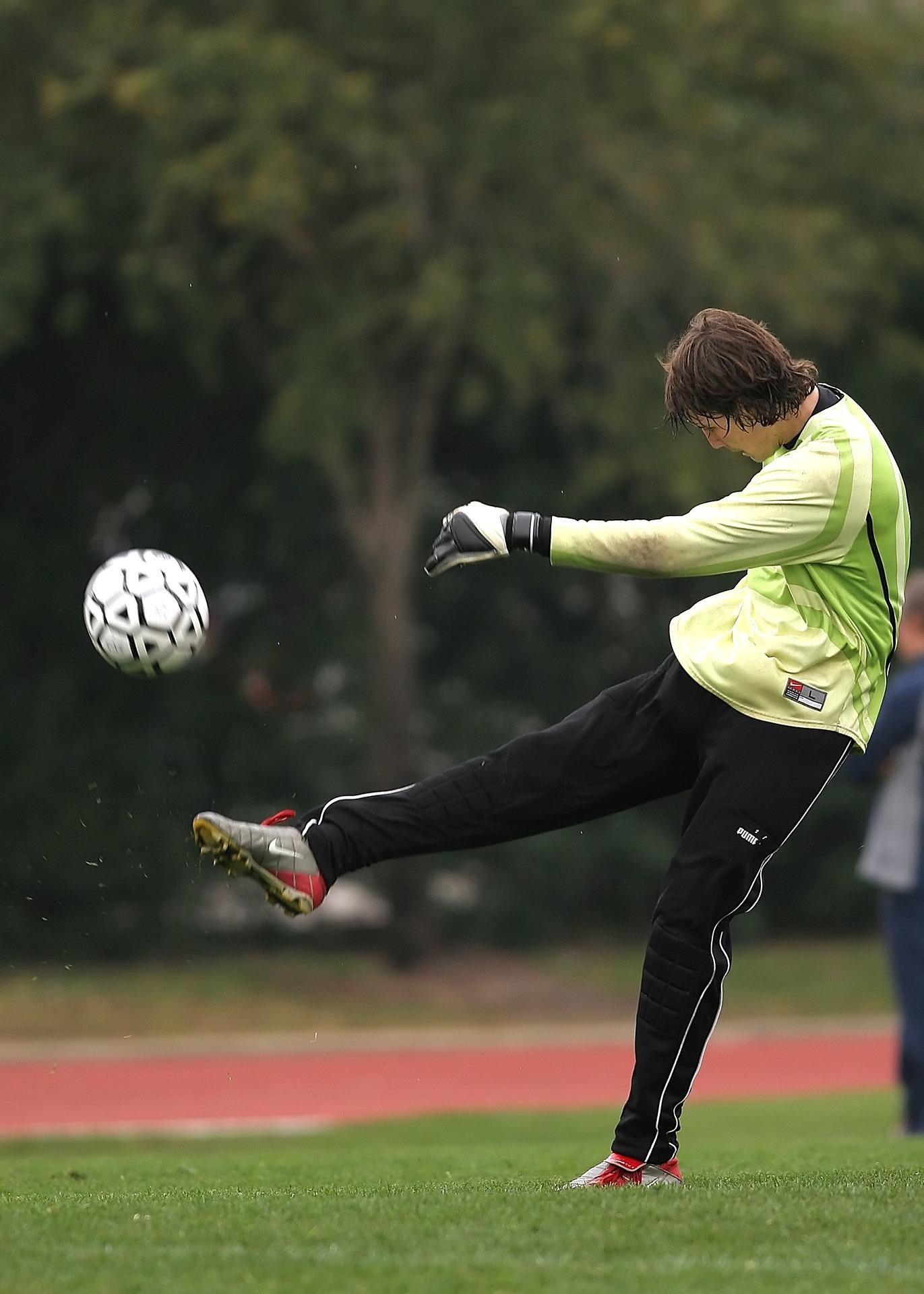
Corner Kick

After a referee pauses the game, corner kicks are one way to restart it. To signal a corner kick, the referee will point to a specific corner - either its flag, or its arc.
Corner kicks are standard when a player kicks the ball behind their own goal line without any player scoring a goal.
Play on / Advantage
When a player does something 'illegal', like striking another player or touching the ball with their hand, the referee gives them a 'foul' (our next chapter covers signalling a foul). However, a player may commit a minor foul that the referee doesn't stop the game for.
They let the play progress if the 'fouled' team is better positioned than had they stopped the play. In such cases, the team with the 'fouled' player receives an advantage. The referee signals this by running forward with both hands extended horizontally, palms up. It means "Play on!" - that the player with the ball may keep playing it.
Red Card and Yellow Card
When a football official signals with a yellow card, it means they are cautioning a player against something they've done wrong. When they hold up the red card - especially with a short whistle blast, the foul is particularly severe.
Yellow cards mean the player may continue to play. Red cards mean 'Leave the pitch!', and that team may not install a substitute.
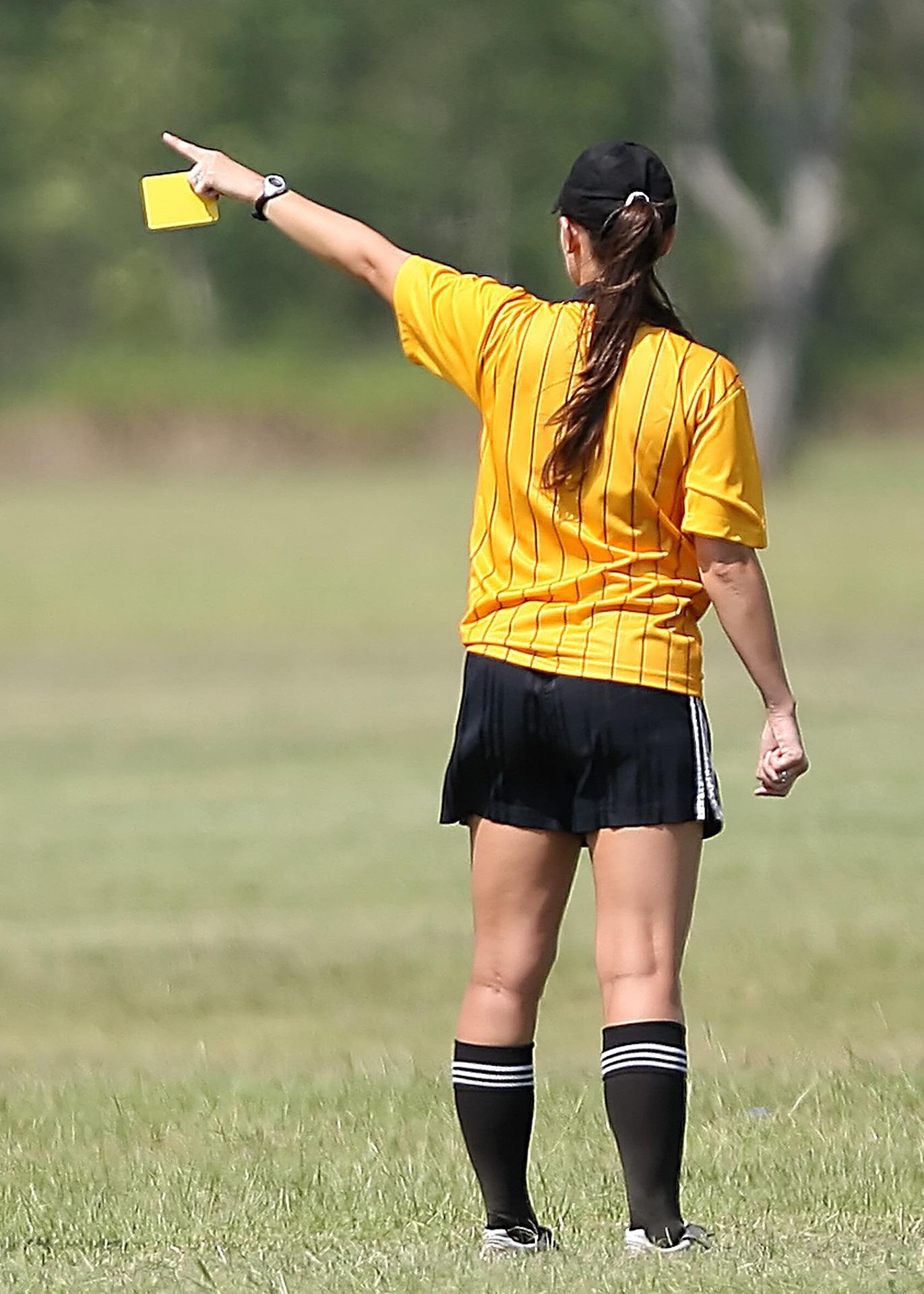
Referees use these cards judiciously, because making a bad call can cause a lot of trouble. Even the most famous football referees make bad calls, sometimes. Should a referee display a yellow or red card, the player can ask for a review before accepting the call.
Handball

Even people who aren't football fans know that players may not touch the ball with their hands. The sole exception is the goalkeeper, who must use their hands to block goals.
Even so, that player may only 'hand' the ball when inside their penalty area. But did you know that, in football, players' hands extend to their shoulders?
If any part of a player's arm touches the ball on purpose, the referee must give that player a foul. Such entails using a yellow card - or a red, if the offence is severe. To specify the card is for a hand offence, the referee will touch one of their hands.

Check
With so much going on at such high speeds, a referee can't always be sure of what they saw. In such cases, they enlist their assistant referees, who likely had a better perspective on the questionable action. When the referee needs to check a move, they will put a finger in their ear while extending the other arm horizontally.
Review
Some spectators enjoy on-pitch disputes more than the game. For instance, when a referee makes a call that infuriates both teams, and the players start fighting.
In such cases, the referee may ask for a review of the video footage. To signal for a review, the referee makes a 'TV sign' by drawing a box in the air, above their head.
By now, you might wonder how much a referee gets paid to make these calls. The answer depends on which league they referee, how much experience they have and, to an extent, how popular they are.

You can read a full breakdown of how much a referee makes once you finish learning the rest of these football referee hand signals. Before moving on, let's recap the signals already learnt, and preview the assistant referees' signals.
Offside

With so much going on during the game, one referee has a hard time keeping up with everything. So, two assistant referees, at opposite ends and sides of the pitch, catch any call the referee might have missed.
Each of them carries a flag, to make their signalling more visible. The following football ref hand signals send the referee messages about which calls to make.
For instance, when a player is closer to the opposing team's goal than the ball, or the goal-keeper, they may receive an 'Offside' call. Making this signal entails the assistant referee raising their flag at an angle, to show where the offside occurred. This assistant referee demonstrates the sign.
Fouls
Only the referee - the one on the pitch, may officially signal a foul. When assistant referees spot a foul, they hold up their flag to signal the referee that a foul occurred.
In such cases, the referee may signal for a review before issuing the foul.

Player Substitution
Come time to swap out players - as often happens during a game, the assistant referee must inform the referee. Those requests come from the sidelines, so they will receive the first notice of intent.
Upon the next game stoppage, the assistant referee will raise both arms, with their flag in one hand. To permit the substitution, the referee will wave the new player onto the field, perhaps with a short whistle blast, for emphasis.
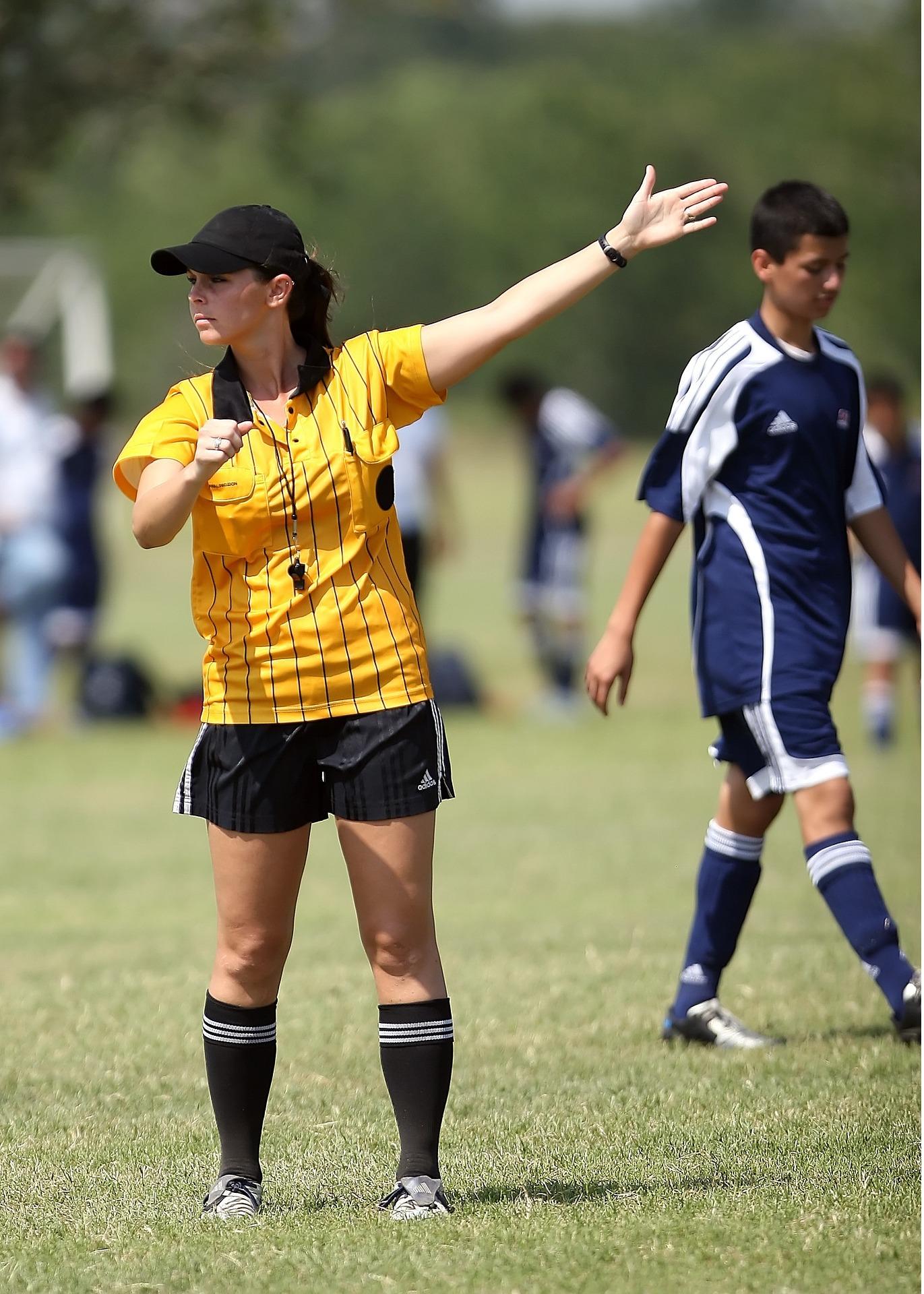
Did you happen to notice, throughout these video clips, that they feature at least one female football referee? Women are making phenomenal strides in football - on the pitch, as coaches, and as officials. Female footballers looking for role models should discover the best female football referees.
Corner Kick
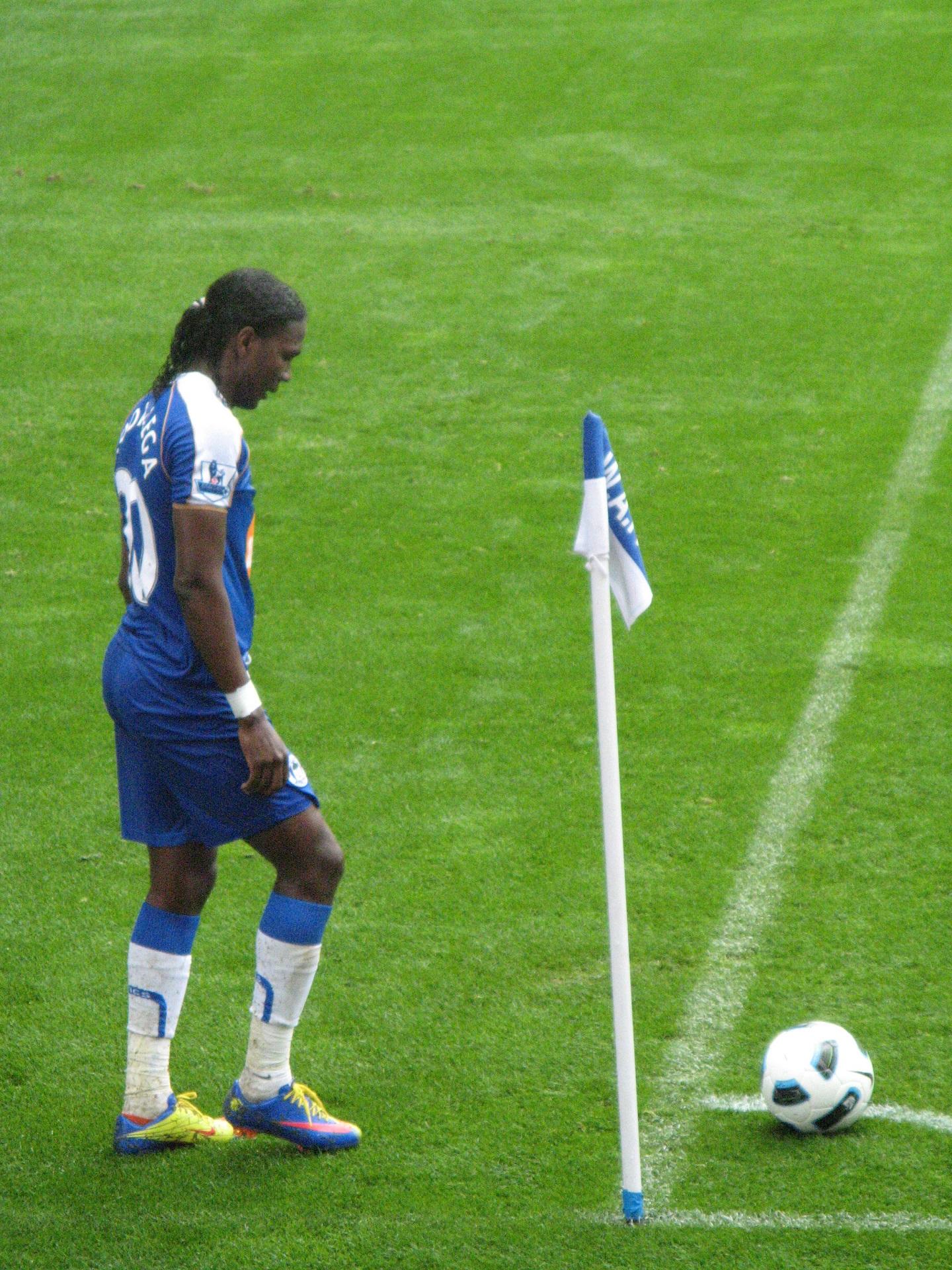
Once the referee signals for a corner kick, the assistant referee closest to that corner will position themselves near it.
They will then point their flag to the corner, holding their arm at 45 degrees from their body. Once the player executes the kick, the assistant returns to their position.
Throw-in
This game's speed and energy often causes the ball to leave the pitch. Throw-ins are one way to put it back into play; a player throws the ball onto the pitch from behind a touchline. As they do so, the assistant referee stands by, then raises their flag 45 degrees in the direction of the ball's travel, once it crosses the line.
Goal
Assistant referees have two ways to signal goals. If it's a 'clean' goal - no mistaking it, they move back to the centre line.
Should they dispute the goal, they stay near the goal line and hold their flag straight up. The referee will discuss the issue with them, and possibly call for a review. They will only call the goal once it's clear what happened.
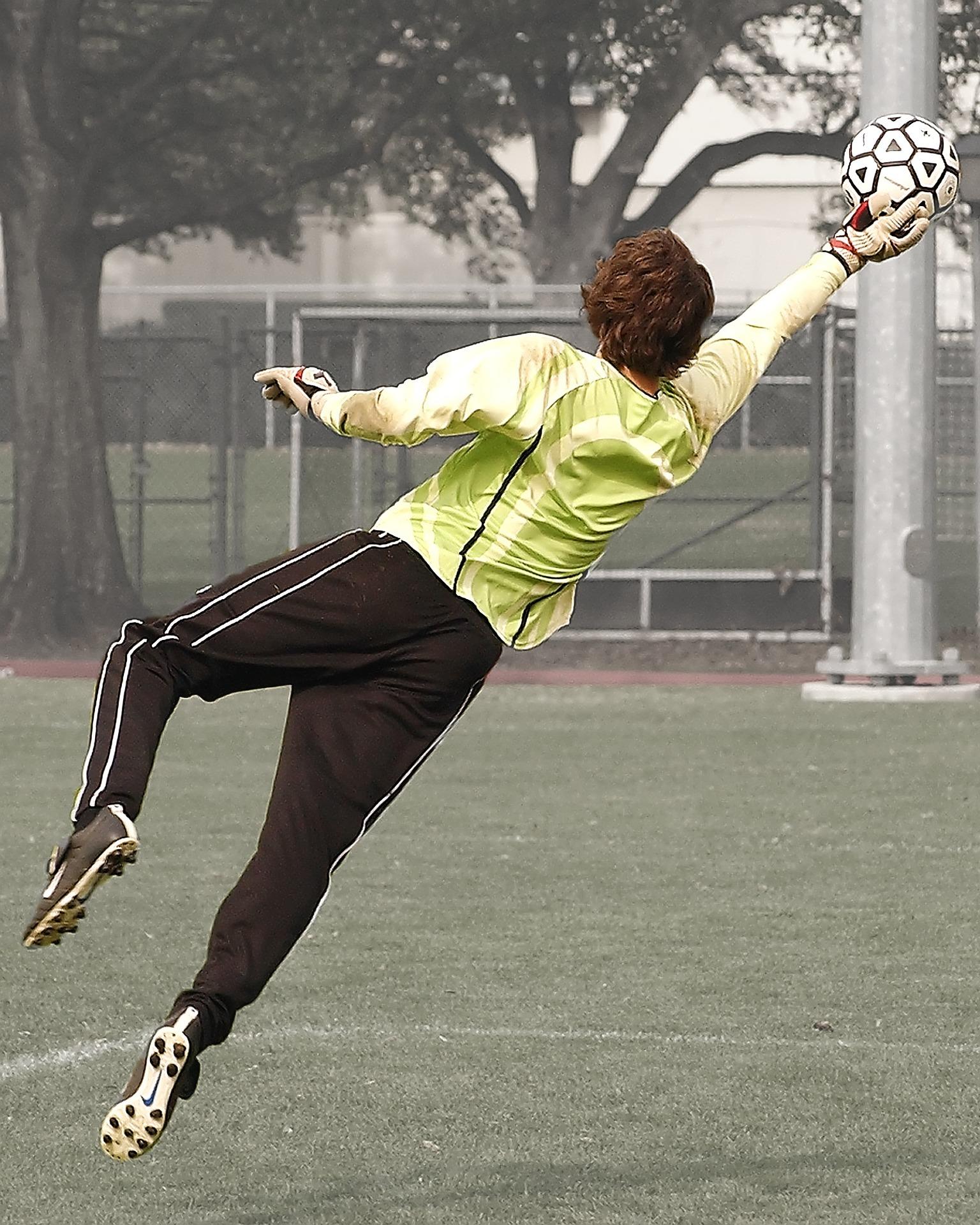
Mastering these hand signals is by no means all you need to know about refereeing in football. However, you've made a good start by learning them. Whether you plan to become a referee or are learning to play this game, you must know how to decode these signs.















